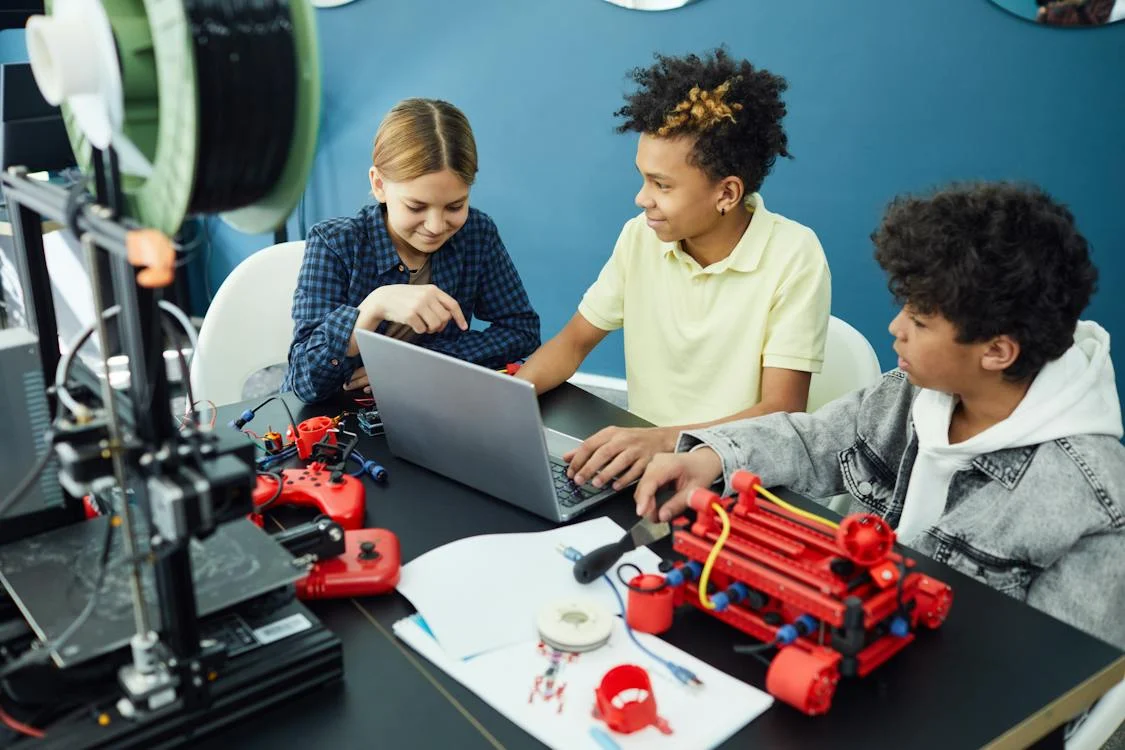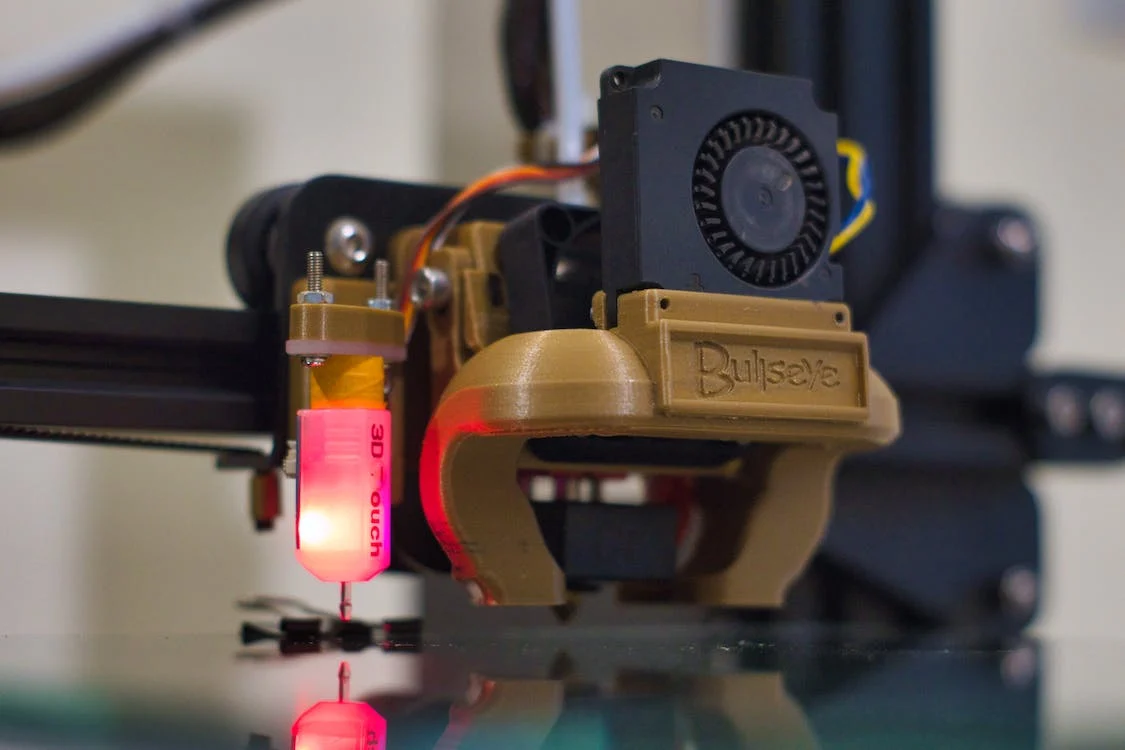These days, 3D printing is everywhere. Businesses are using them to make many different things that range from product prototypes to jet engines and everything in between. But have you ever wondered how 3D printers work? How do you think these machines are able to make three-dimensional objects of virtually any shape in just a matter of hours? Well, if you’re also wondering about it, you’re in the right place because we are going to let you know how 3D printers work.
How Does a 3D Printer Work?
If you’re familiar with how a normal Inkjet printer or document printer works, then it will be pretty easy for you to understand how 3D printers work in general. For example, if you want to make something useful, like a case for your smartphone, here’s how a 3D printer will create that for you.
- Same with a document printer, a 3D printer also requires a digital document but in a digital design file format of 3D objects. It means that the first step is to create or download a digital file that encodes the design of the smartphone cover or the specific object you want to create.
- Once you have the digital design, your computer will process it and get it ready for printing. It will also give you options just like in a normal printer.
- After that, the next step is to choose a material for the object you want to create, which is the smartphone cover. For this item, plastic is the most preferable material. You will select it and then load the printer with enough material. If in a normal printer you use ink cartridges, in a 3D printer, filaments which are made of different materials are used. They serve as the ink for 3D printers.
- The 3D printer will create the object you wish by depositing many layers of materials on a print bed. Once the 3D printer is loaded with materials, the computer will send instructions to it on how to deposit the material layer by layer to create a physical copy of the digital design.
This is the basic process of how 3D printers work but since there are different 3D printing technologies today, their processes can also differ from one another. To further understand, here’s a rundown on how the four most common 3D printing technologies work.
Fused Deposition Modeling (FDM)
Fused Deposition Modeling or also known as fused filament fabrication is the most common and popular type of 3D printing on the consumer side of things. If you have seen a 3D printer in person, chances are pretty good that it is an FDM printer.
FDM machine works similar to a hot glue gun that is being operated by a robot. The solid material goes into one end and then gets pushed through a hot nozzle. It melts and is deposited in thin layers. This process will repeat over and over until a 3D object emerges. But instead of glue, this 3D printer uses a thermoplastic filament which are purposefully-engineered plastics that are designed to melt at a very specific temperature but can return to a solid state when cooled down just a couple degrees.
To explain it simply, FDM 3D printing is 2D printing over and over again. Every after one layer is done, the nozzle will move up a little bit and the next layer will be printed on top of it. After hundreds or even thousands of layers are stacked on top of each other, it will result in a 3D object.
Stereolithography (SLA) and Digital Laser Projection (DLP)
SLA and DLP are somewhat similar to one another because both technologies use light to grow objects in a pool of photoreactive resin. Their difference is that SLA works by flashing a laser or a tiny dot of concentrated light across a given area to make it solid and create a layer. DLP machines, on the other hand, cure all areas of a layer simultaneously through light projection onto the resin in the shape of that layer.
But regardless of the technical specifics of the two 3D printing technologies, they work in a similar fashion. First, the build plate of the printer is lowered into a pool of liquid resin. It will stop just a fraction of a millimeter before reaching the bottom. The baseplate is completely transparent so that the light will be able to shine up through the bottom. When this happens, the liquid resin that is struck directly by the light will solidify, forming the first layer of the object and fusing it to the build plate. After that process, the build plate will move up a few microns, drawing in more liquid resin beneath it and the whole process will repeat. In SLA and DLP 3D printing, objects are created layer by layer from the bottom up.
Selective Laser Sintering (SLS)
SLS 3D printing works differently compared to FDM and SLA. For it to create an object, the SLS machine will flash a laser over a bed of superfine powder. The particles will be fused together to form a thin solidified layer. After that, the machine will sweep more powder over the top of that layer, effectively burying it. It will then repeat the process until the print or the object is complete.
SLS 3D printing can work with a broad range of materials. It can print large overhangs and spans without the need for support materials. And it can also produce extremely high-quality objects. It can create items that are nearly as good as those created through milling, injection molding, and other traditional manufacturing processes. However, SLS 3D printers are outrageously expensive compared to FDM, SLA, and DLP printers.
PolyJet 3D Printing
PolyJet printing is like a hybrid between FDM, SLA, and normal 2D-inkjet printers. PolyJet printers squirt out tiny droplets of photo-reactive resin onto a build surface, and then immediately harden it with ultraviolet light. This process is repeated hundreds and sometimes thousands of times to create an object layer by layer. But unlike FDM printers, this machine can deposit material from multiple nozzles at once that’s why it is called PolyJet.
With this type of printing technology, objects can be created with a wide range of colors, gradients, and patterns. Aside from that, there are also PolyJet printers that can print with multiple materials simultaneously. It is also able to print objects in extremely high resolutions that sometimes makes it difficult to tell that they are 3D printed.
3D printers are indeed amazing and it is one of the most promising technologies developed in the past couple decades. It is a great device especially for product designers, engineers, and other product manufacturers because it will help them time and money for production. 3D printers are only going to get more powerful and capable.
Are you interested in 3D Printing? Check out some of our great posts covering this amazing technology:
- What is a 3D Printer?
- Top Recommended 3D Printers
- Benefits of 3D Printing
- Best Low Cost 3D Printers
- 3D Printer Science Projects
- Best Home 3D Printers
- History of 3D Printing

